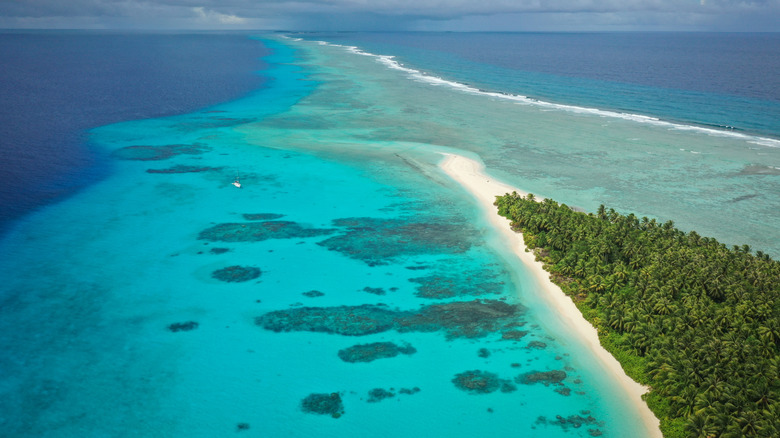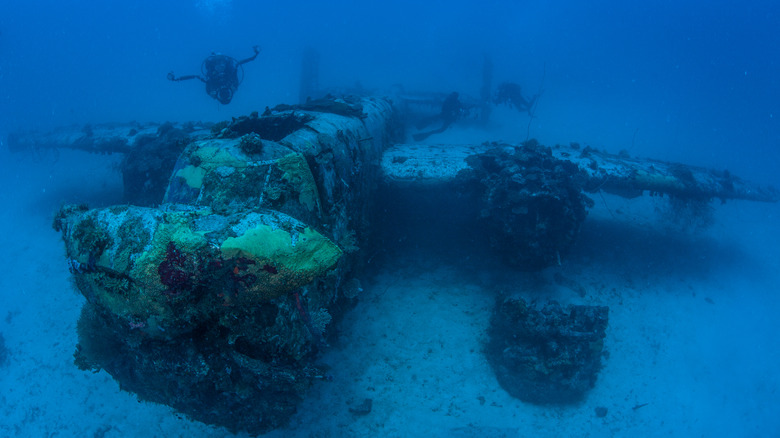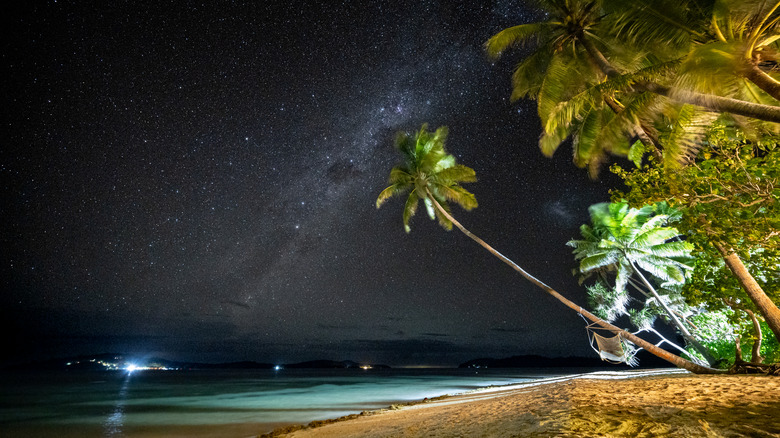
Nestled in the center of the Pacific Ocean is an island nation rich in natural beauty on land and under the water. The Marshall Islands, recognized as an independent nation in 1986, is a place of slow-paced, sunny days and clear, star-soaked nights. While the island nation has over 1,200 islands and atolls, only 24 are inhabited, and most tourists spend their time on just a handful of these.
The 55,000 citizens of the Marshall Islands welcome just 10,500 visitors a year to explore their pristine white
sand beaches. This can be attributed to the remote location of the sprawling islands: the shortest flight to reach the capital of Majuro is from Honolulu, clocking in at just over 5 hours, and is offered only a handful of times a week. On average, travel time from the West Coast of the U.S. is over 24 hours with stops, and it carries a hefty price tag. Domestic and regional flights link some of the other atolls and islands.
If dipping your toes in this magical corner of the Pacific is on your bucket list, you might want to make it a higher priority. Much of this tiny nation lies less than 20 feet above high tide. As a result, like many other destinations being destroyed by climate change, it is severely threatened by rising sea levels. The good news is that this young nation is focusing on sustainable measures to increase tourism and combat climate vulnerability.
Read more: Gorgeous Caribbean Beaches That Are Wildly Underrated, According To Travelers
Unmatched Wreck Diving

Although there are epic diving spots hidden within the U.S., those willing to make the long journey to the Marshall Islands will be rewarded with an explosion of underwater life unique to the waters of the Pacific. The small nation boasts the world's largest shark sanctuary, nearly four times the size of the state of California. With commercial shark fishing banned in the area since 2011, life underwater has thrived, unlocking a vibrant array of biodiversity.
The strategic location between Asia, Australia, and the Americas made the Marshall Islands critical to the Allies' Pacific campaign during World War II. With battles fought both by air and sea, the surrounding waters are now a graveyard of wrecks, elaborately covered in sponges and populated by large, healthy schools of fish and other marine life. Over 100 airplane wrecks and more than 20 military shipwrecks are accessible to divers of varying skill levels, many eerily intact and littered with military paraphernalia.
Without question, the highlight of wreck diving in the Marshall Islands is Bikini Atoll, a UNESCO World Heritage Site. Almost 80 years after the United States military launched nuclear bomb tests on the site, the area is now an unofficial underwater museum of ships and planes, including an aircraft carrier. Among the coral reefs, green sea turtles swim alongside bumphead parrotfish, while an abundance of shark species keep watch over giant clams, a dream for any underwater photographer.
Stargazing From The Equator

With so much of our time spent staring at light sources and screens, it's no wonder that scientists are finding mental health benefits in stargazing. In fact, if you have visited some of the least light-polluted night sky views in the U.S., you'll know that breathtaking sensation that has captured humans' attention for centuries. While stargazing is best experienced on clear winter nights when the moon is in its crescent phase, the remote equatorial location of the Marshall Islands limits light pollution and provides a relatively consistent number of nighttime hours year-round. Stargazing near the equator offers the added opportunity to observe stars and constellations visible to both the northern and southern hemispheres, though not simultaneously. Specific views will depend on the time of year. You may need to reorient yourself to locate constellations and stars that you are accustomed to seeing in specific locations at home.
Stars and constellations have always been of great importance to the people of the Marshall Islands. The indigenous Marshallese were seafarers who used the stars to navigate between the islands. The constellations are deeply entwined in traditional folklore, like many people who are connected to the ocean for survival and identity. The Marshallese developed a unique system of stick charts, made from coconut midribs and cowrie shells, to create maps to guide them further. Today, these stick charts have been remade as souvenirs for you to take home and remember your visit to this unique and special place.
Ready to discover more hidden gems and expert travel tips? Subscribe to our free newsletter for access to the world's best-kept travel secrets.
Read the original article on Islands.














